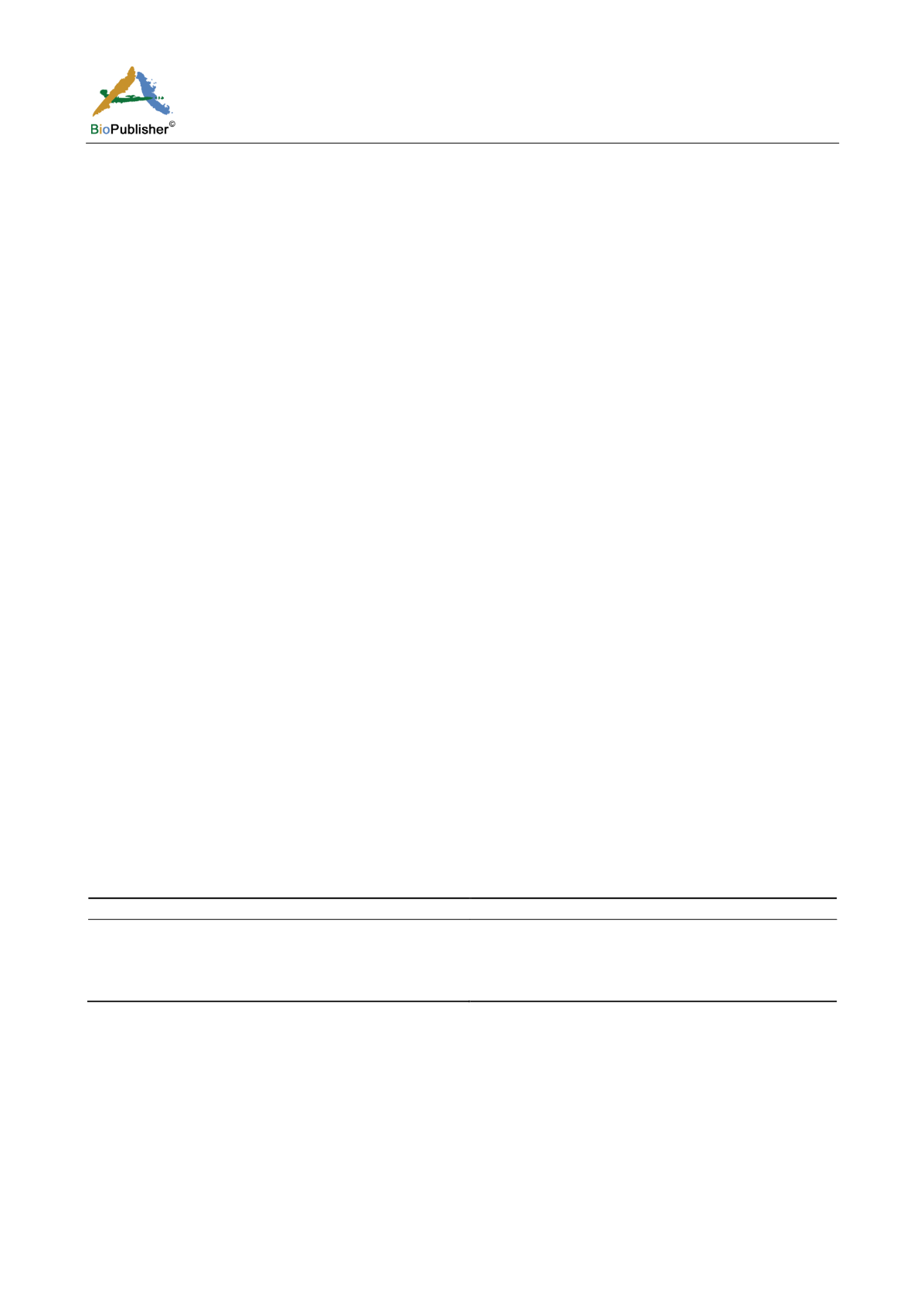
International Journal of Marine Science, 2017, Vol.7, No.41, 394-398
395
basis of four cages - tubs fixed near the muddy mud shelf to be bottom connected to the bottom. The other two
pellets were fixed three meters from the shelf in a floating way, which is not connected to the muddy floor. In each
basin, 20 young shrimps were then transferred to submersible cages (SC) and floating cages (FC), each has two
cage dimensions 75 ×75 ×75 cm
³
made from a metal frame with a 1 mm slotted mesh, which was set in one side
of a pond belonging to the aquaculture Station of the Center for Marine Sciences. Feeding rate of once daily, while
feeding levels were depending on Van Wyk et al
.
(1999). The experiment lasted 45 days, during which some
environmental conditions were measured of temperature, salinity, pH and oxygen content. The weights were
calculated by an electric scale and measurements were made every week after the maximum amount of moisture
of the shrimp body was eliminated.
The estimate of daily food intake was based on New (1987):
Amount of daily food= (number of adolescents ×average weight ×nutrition ratio) / 100.
The following growth measures were based on Jobling (1993):
Total weight gain (g)= Final weight (g) - Primary weight (g).
Daily growth rate (% g/day)= final weight (g) - primary weight (g) / duration of experiment (days).
Relative growth rate (RGR)= Increase Weight (g) / primary weight (g) ×100
.
Survival rate was also calculated based on Teng et al
.
(1985):
Survival rate% = (final number at the end of the experiment / total number at the beginning of the experiment) ×
100.
The utilization rates of food were based on Hepher (1988):
Feed conversion rate (FCR)= amount of food intake (g) / weight increase (g).
1.1 Statistical analysis
The results were statistically analyzed using the Statistical Pakage Social Science (SPSS) version 17 of 2007, and
the studied factors were tested using the least significant difference (L.S.D) and below the level of significance
0.05.
2 Results
2.1 Environmental conditions
Table 1 shows some environmental conditions in submersible cages (SC) and floating cages (FC), temperature
ranged between 25-30°C, salinity (mg/l) 1.3-1.9, pH 7.5-7.8, while the dissolved oxygen (mg/l) was between
6.6-7.0.
Table 1 Some environmental conditions in cages
Parameter
Mean ±SD
Temperature (°C)
27.667 ± 3.055
Salinity (mg/l)
1.603 ±
0.329
pH
7.783 ± 0.226
Dissolved oxygen (mg/l)
6.863 ± 0.228
2.2 Growth rates
It showed the statistical analysis significant (P < 0.05) differences in FCR and in RGR between the shrimp
M.
affinis
cultured in the SC and FC, while there were no significant differences in the rates of daily growth and
increase in weight and survival rates and weekly weight (Table 2).
There were no significant differences in Figure 1 between the weekly weights of shrimp
M. affinis
grown in
floating cages and that in submersible cages.


